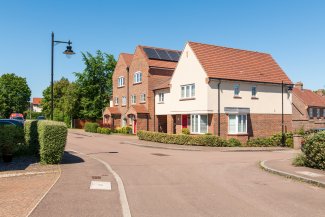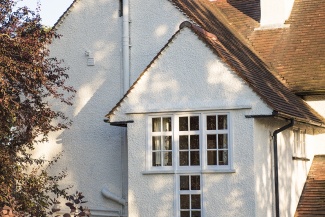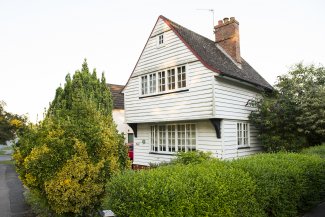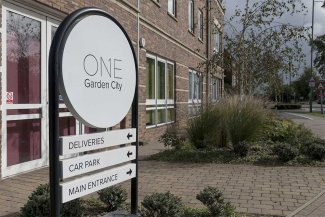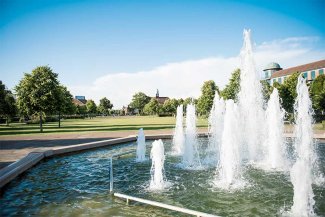As COP26 took place in Glasgow this year, the shocking news that our sewers regularly overflow into our rivers came to the fore. With rainfall increasing and population levels rising year on year, localised flooding and higher sewage output is affecting our rivers and waterways. Soft green landscaping helps take the brunt of high rainfall and is also incredibly important to maintain the beautiful and unique Garden City that we live in.
As we become more eco-aware, we want to help make a difference. This feeling is echoed at Letchworth Garden City Heritage Foundation, and we want to help our residents make the best choices to put our environment first.
Eco-friendly materials for driveways
There is no denying that cars have become a necessity in our lives, and it is safer to park them off the road. Over recent years we have seen an increase in requests for hardstands and driveways, something we support, but with environmental caveats. All areas within the Scheme of Management and most leasehold properties require front gardens to be at least 50% greenery, this is not just for aesthetics but also to help with rainfall. This is because when rain hits solid concrete, it has no choice but to run into our drains, the more concrete and rainfall, the more likely localised flooding is as drains become overwhelmed.
As a response to climate change, there have been vast improvements in environmental technology, one such being permeable or pervious concrete. This concrete allows rainwater to access the soil underneath by aiding drainage and without causing flooding. Due to the way this concrete is made, less of the material is needed, so production-related pollution is reduced. Not only does this invention help the environment, but issues such as frozen puddles on driveways and localised flooding is reduced. Driving through deep puddles may be fun but walking through them certainly is not!
Gravel is an attractive way of installing a driveway or path to your home. There are many types and colours of gravel at varying prices. To make sure that your gravel drive is good for water drainage, install a layer of weed prevention membrane underneath the stones. If you have a path or drive that is not in street view, crushed concrete (or recycled concrete aggregate) is an even cheaper alternative to gravel. This material can be used for driveways, pathways, garden beds and more. It helps with drainage and as it is recycled, the carbon footprint is small. There are also a surprising number of assorted colours and types available. Do speak to a professional when thinking about crushed concrete vs gravel options.
Permeable paving grids could also be another aesthetically pleasing eco-friendly style of driveway. The paving grids allows for greenery to grow through gaps, which prevents surface run-off that happens through regular hardstands.
We have seen some amazing examples of mixed driveways that use gravel or grass runners alongside brick sett paths over the years. For those with smaller front gardens, this may be a good option.
Benefits of permeable pavement
In addition to the eco-benefits to installing soil friendly driveways and pathways, factors such as localised flooding can help our local rivers. All overflow drains into our sewers and out into our rivers causing whatever is in our sewers to (ahem) go into our rivers. Not a nice thought!
Permeable driveways also help with reducing pollutants and bacteria to build up and run into our waterways by allowing water flow to continuously occur instead of stagnating.
When thinking of the options of how to aid drainage in Letchworth to aid our riverways, speak to a local professional or email us on home@letchworth.com to find out what you can do in your area.
